How Far is a Triathlon? What You Need to Know About Every Triathlon Distance
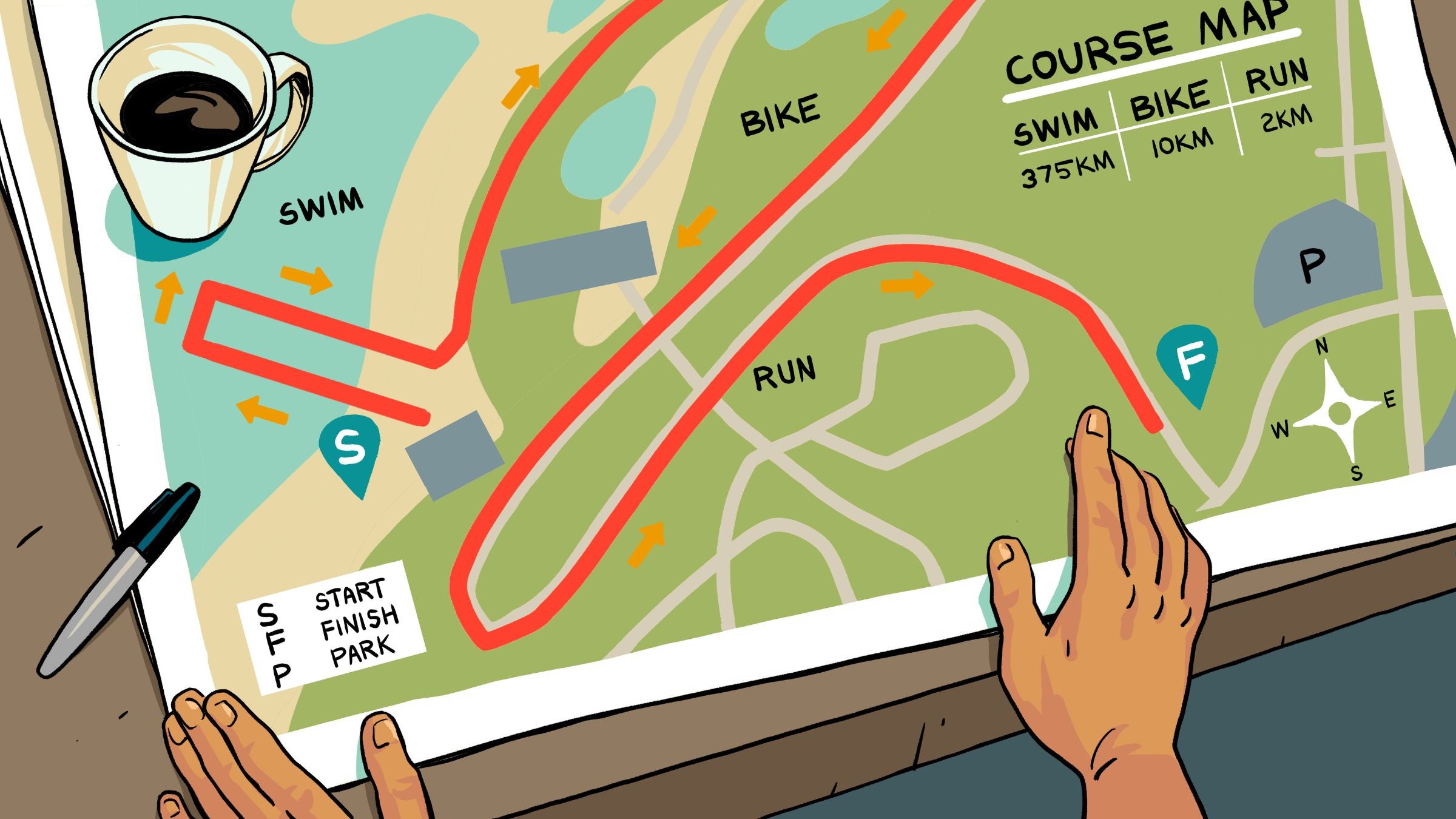
(Photo: James Boyle)
For most people, “triathlon” and “that race in Hawaii” are synonymous–many have seen glimpses of the annual broadcast of the Ironman World Championships in Kailua-Kona, which can give viewers the impression that the sport is a very long, very grueling day of swim, bike, and run. But Ironman is only one of many race distances within the sport of triathlon, adding a choose-your-own-adventure answer to the question, “How far is a triathlon?” From super sprint to ultra, there’s a triathlon distance for everyone. Welcome to the wide world of swim-bike-run–as you can see, triathletes cover a lot of ground!
If you’re brand new to triathlon and looking for resources, be sure to check out our complete guide to your first triathlon.
| Triathlon Distance | Swim | Bike | Run | Avg. Finishing Time |
| Super sprint | .5K | 10K | 1.5K | :45-1:00 |
| Sprint | .75K | 20K | 5K | 1:15-1:45 |
| Olympic | 1.5K | 40K | 10K | 2:30-3:30 |
| Half-Iron/70.3 | 1.2mi. | 56mi. | 13mi. | 5:00-6:30 |
| Ironman/Iron-distance | 2.4mi. | 112mi. | 26.2mi. | 10:00-14:00 |
RELATED: How to Estimate Your Triathlon Finishing Time
Triathlon Distance: Super Sprint
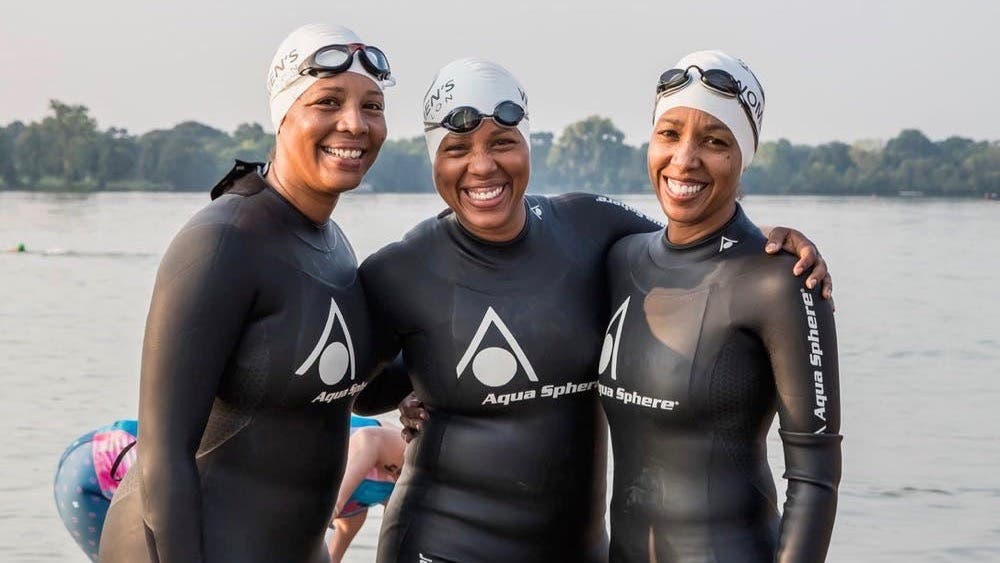
Swim: 500 meters (.3 mile)
Bike: 10K (6.2 miles)
Run: 1.5K (1.6 miles)
(Distances may vary)
How much time will I need to train for a super sprint triathlon?
3-4 hours per week
Super Sprint Training Plan: Tackle Your First Triathlon
Thinking about dipping your toes into the multisport waters? A super sprint triathlon is a great place to start. The format is incredibly beginner-friendly, as the distance can be achieved by many on very little training. The gear required for a super sprint is super minimal – if you already have a bike (any bike!), a helmet, and a pair of running shoes, you’re good to go! New swimmers appreciate the pool format utilized by many (but not all) super sprints: instead of taking place in open water (lakes or oceans), many super sprint swims are held in pools, allowing new athletes to try out their swim racing skills in a safe, controlled environment.
But super sprints aren’t just for newbies. The short-but-intense format is also showcased in the Olympic Mixed Relay Race, where teams of four alternate between super sprint courses, tagging their teammate at the end of the run to kick off their swim.
Triathlon Distance: Sprint
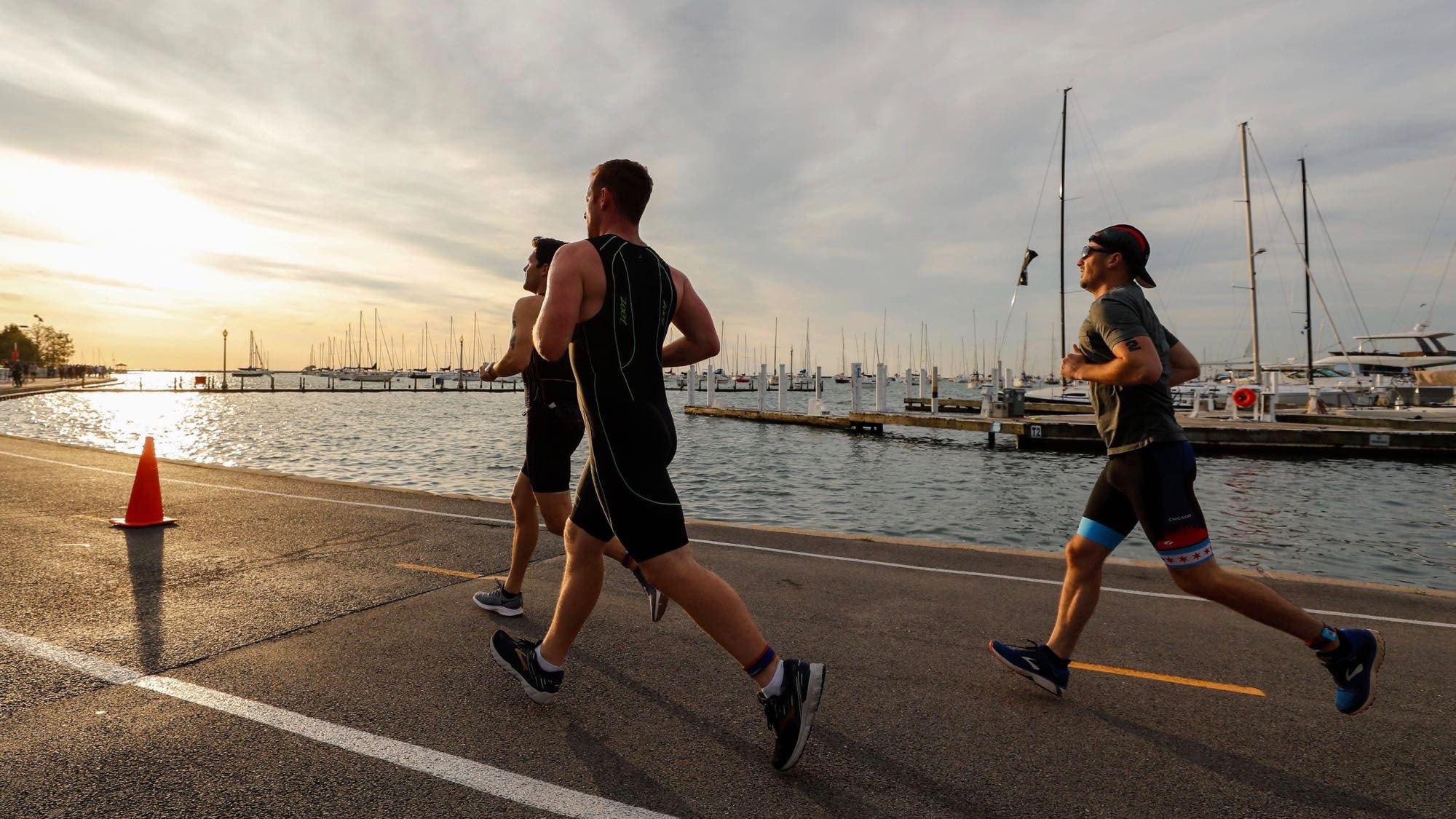
Swim: 750 meters (.46 mile)
Bike: 20K (12.4 miles)
Run: 5K (3.1 miles)
How much time will I need to train for a sprint triathlon?
3-5 hours per week
Sprint Training Plan: Eight Weeks to Your First Sprint Triathlon
More than 75 percent of triathletes have completed this fast-and-fun distance, making the sprint triathlon the most popular event in multisport. And for good reason – beginners find the race distances approachable, while veterans of the sport know the short distance can pack a lot of intensity – going full throttle for the entirety of the swim, bike, and run takes serious fitness. Training for a sprint triathlon fits nicely into even the busiest schedules, allowing athletes to get their swim-bike-run fix without overhauling their lives. The financial cost is also low – like its super sprint counterpart, very little is required to complete a sprint triathlon.
Related: The Triathlete Guide to Sprint and Olympic Triathlon Racing
Triathlon Distance: Olympic
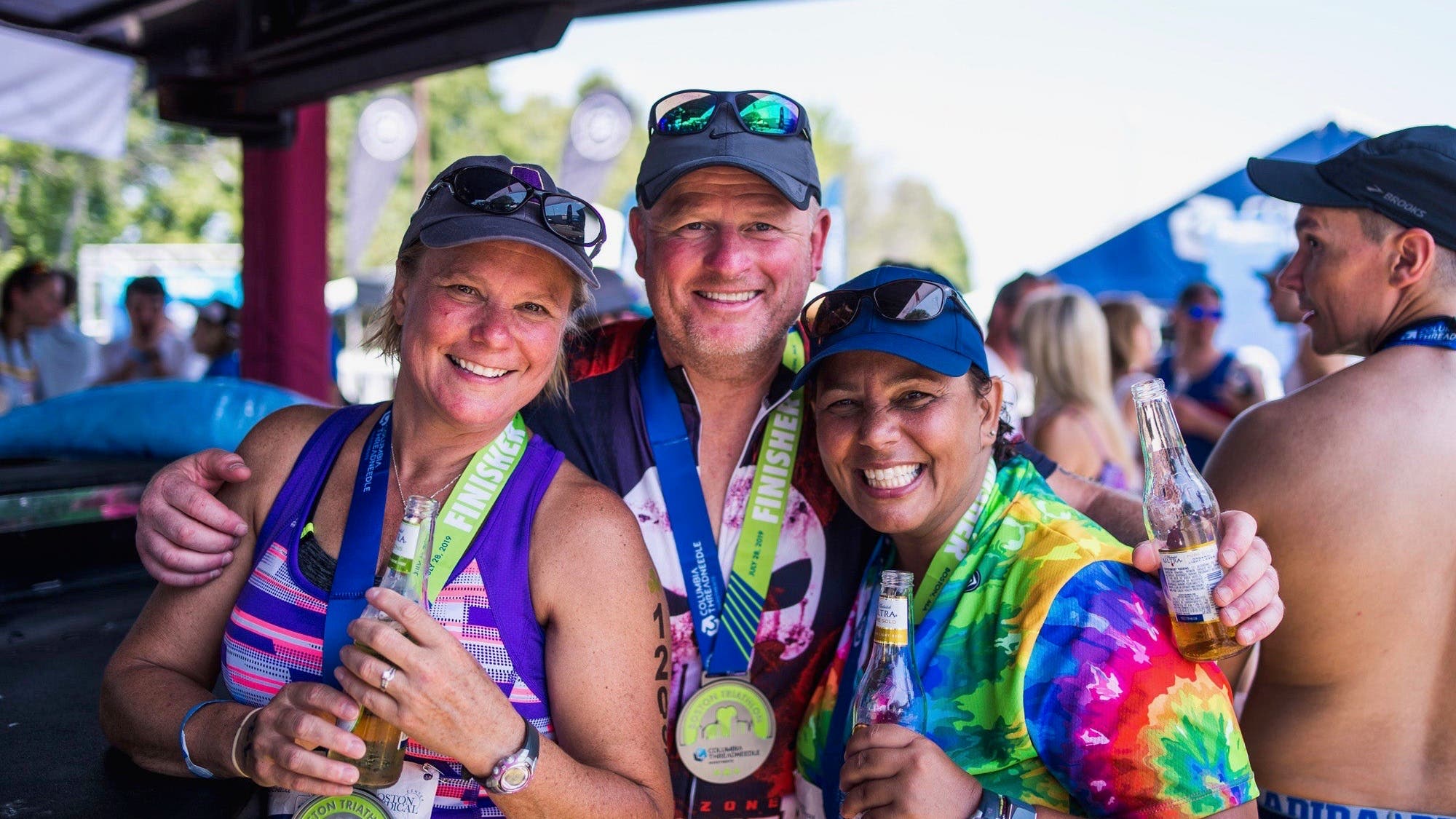
Swim: 1.5K (.93 mile)
Bike: 40K (24.8 miles)
Run: 10K (6.2 miles)
How much time will I need to train for an Olympic triathlon?
5-7 hours per week
Olympic Training Plan: Rock Your First Olympic Triathlon
Maybe you won’t be competing in the Olympic Games, but that doesn’t mean you can’t race like an Olympian. This standardized distance is the best of both worlds – short and intense, while still requiring attention to endurance elements like pacing and nutrition. Some Olympic-distance events even allow drafting (riding behind your competition to gain speed and save energy), adding another element of strategy to the competition. In an Olympic triathlon, you can still use entry-level gear, though the longer you go, the more likely you’ll be looking to upgrade.
Related: The Triathlete Guide to Sprint and Olympic Triathlon Racing
Triathlon Distance: Half Iron
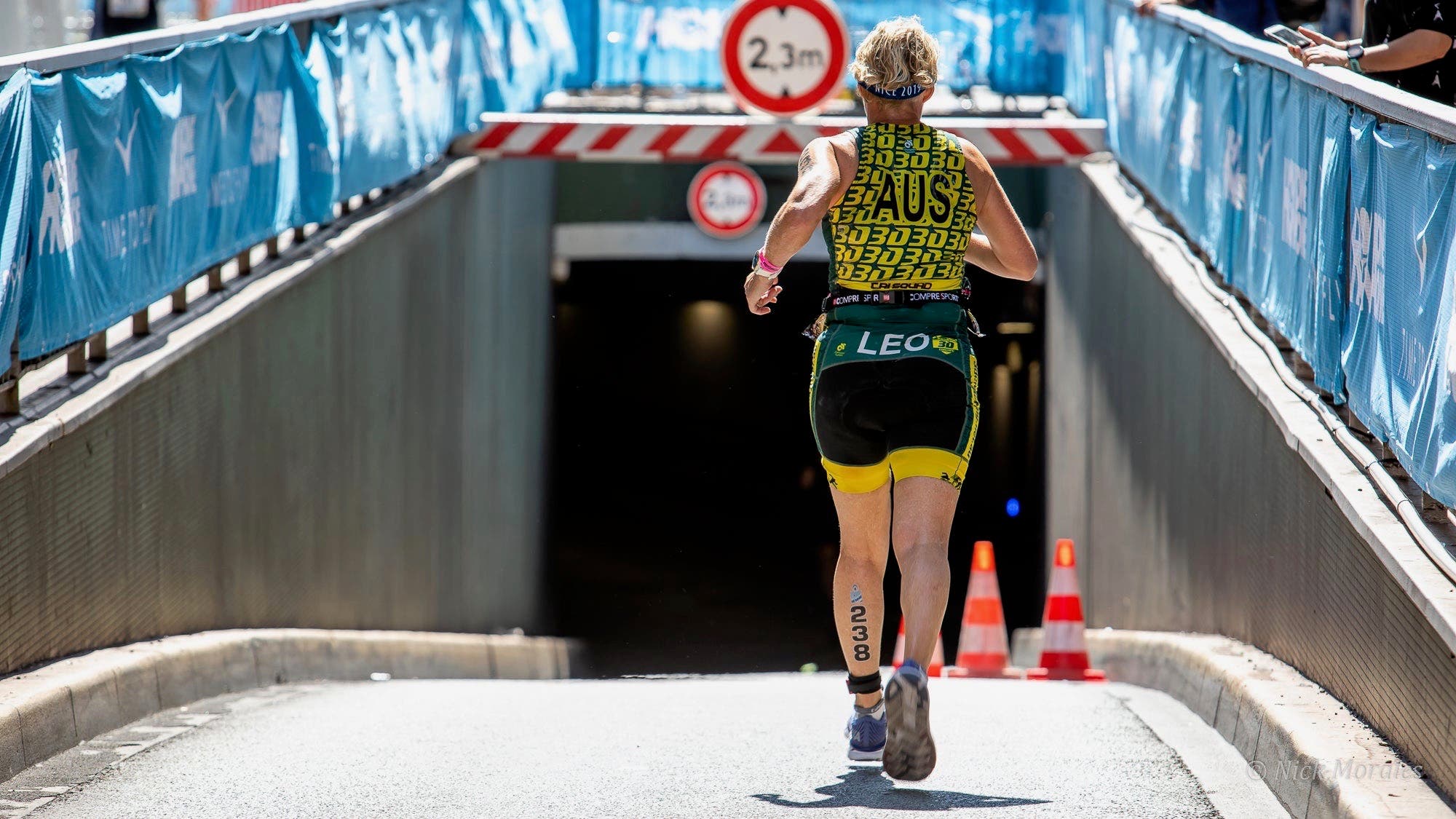
Swim: 1.93K (1.2 miles)
Bike: 90K (56 miles)
Run: 21K (13.1 miles)
How much time will I need to train for a half-iron triathlon?
8-13 hours per week
Half Iron Training Plans: 20 Week Training Plan for Your First 70.3
Ready to put the “endurance” in endurance sports? The half iron distance (also known as 70.3, for its cumulative mileage) has grown tremendously in popularity in recent years. The training volume is higher than its short-course counterparts, but not exceedingly so–many athletes find ways to fit their half iron training in without shirking their family, work, and social obligations. Still, this requires commitment and attention to detail–not only in your schedule, but in your lifestyle. Things like adequate sleep and proper nutrition become increasingly important, as will a good budget–at the half-Iron distance and up, gear matters. A bike that is comfortable enough for a 12.4-mile sprint distance ride may be excruciating to sit on for 56 miles, and more time in the water might requiring an investment in a wetsuit to stay warm.
RELATED: Triathlete’s Complete Guide to Training for a Half-Iron/70.3 Triathlon
Triathlon Distance: Full Iron
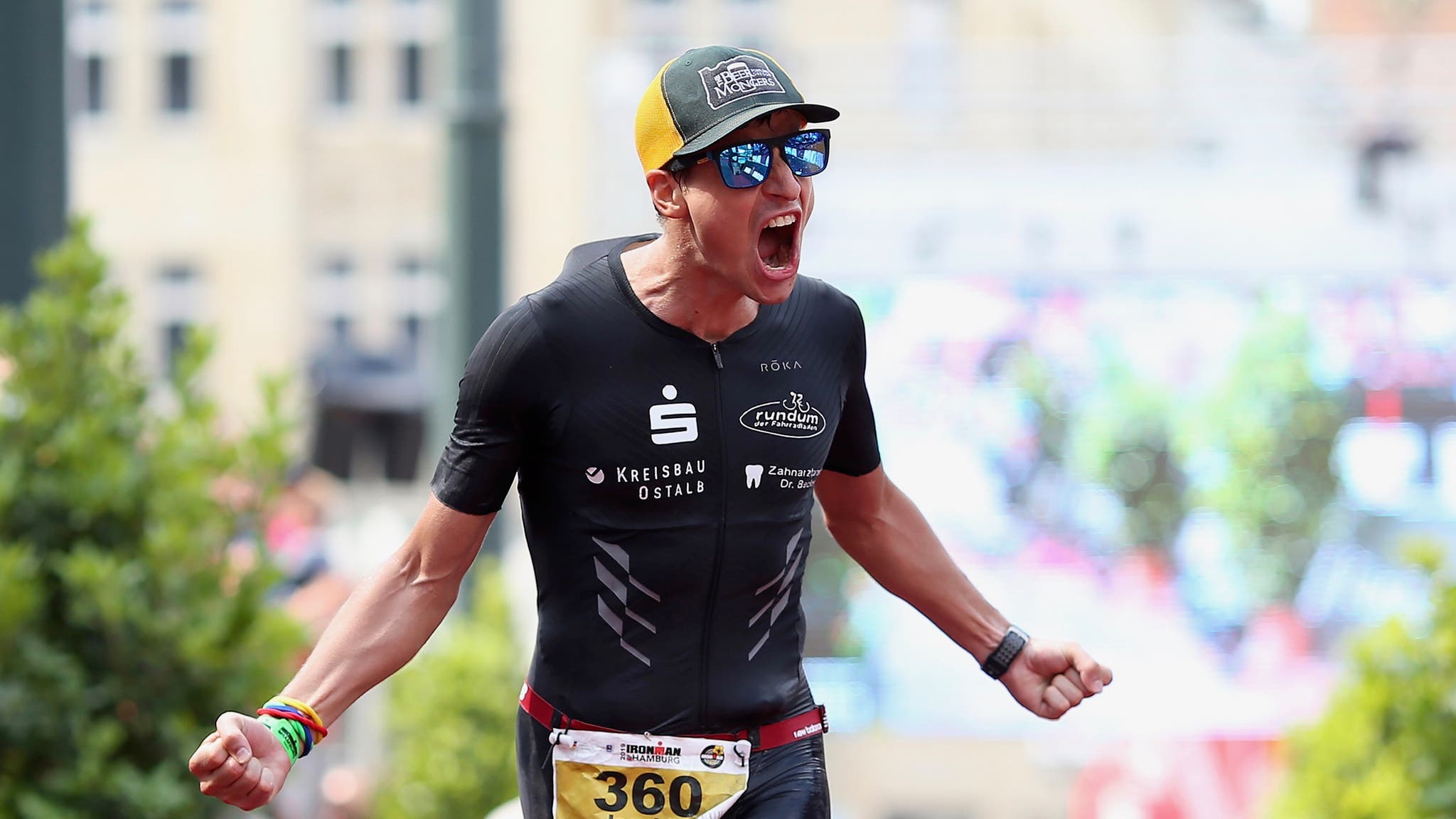
Swim: 3.9K (2.4 miles)
Bike: 180K (112 miles)
Run: 42.2K (26.2 miles)
Note: Though “Ironman” is often used as the term for iron-distance events, not all 140.6-mile races are Ironman races – only races organized and run by the Ironman brand.
How much time will I need to train for an Iron-distance triathlon?
13-20 hours per week
Iron-distance Training Plans: Training Plan for Your First Ironman
Depending on who you ask, doing a 140.6-mile race is either completely crazy or totally badass. Though Ironman isn’t for everyone, those who do take on the challenge find it to be a life-changing experience. Training for an Ironman is not just a few big training days but a lifestyle, with daily work toward the ultimate goal – multiple workouts per day, hours-long rides and runs on the weekends, recovery routines, and nutrition (so much nutrition – more exercise means more food!). This, of course, means less time for other things, like household chores, other hobbies, and socializing. While some athletes may have to get creative to balance family and training time, it can be done. Still, it’s important to be realistic about the time you can (and are willing) to dedicate in the pursuit of this goal. Ditto for finances – from high entry fees to the gear and food required (did we mention you’ll be eating all the time?), an Ironman-in-training is likely to see the dollar signs stack up.
RELATED: Triathlete’s Complete Guide on How to Train for an Ironman
Triathlon Distance: Ultra
How much time will I need to train for an ultra triathlon?
20+ hours per week
Training Advice: Ready for More? Here’s How to Tackle Your First Ultra Tri
Anything over the standard Iron distance falls under the “ultra” umbrella, with the most common distances being the double (2x Iron distance), triple (3x), quadruple (4x), quintuple (5x) and deca (10x) triathlons. Unlike shorter tri distances, which are all completed in one day, ultra races are often spaced out over multiple days. Some races complete the entirety of swim, bike, and run legs in consecutive order, while others consist of multiple triathlon races performed on consecutive days. Because of the extreme time and financial commitment required for this format, the ultra triathlon scene is quite small, with less than two dozen organized races held worldwide each year.
RELATED: Your Ultimate Guide to Ultra Triathlon
Other Formats
Most multisport races follow the traditional pattern of swim-bike-run, but there are several variations within the sport. Indoor triathlons eschew distances for time, completing as much distance in a pool swim, spin bike, and treadmill runs within a fixed time. Off-road triathlon takes place on rugged terrain, swapping out the traditional triathlon bike for mountain biking and pavement running for trails. There is also a gravel triathlon version, which is quickly gaining popularity with multisport athletes looking for a fun adventure. A reverse triathlon turns the pattern on its head, starting with the run and finishing with the swim. A duathlon eliminates the swim and follows a run-bike-run sequence. An aquathlon combines a swim followed by a run, while a SwimRun alternates (or “island hops”) between swimming and running. There is even a winter triathlon, which combines running, mountain biking, and cross-country skiing.